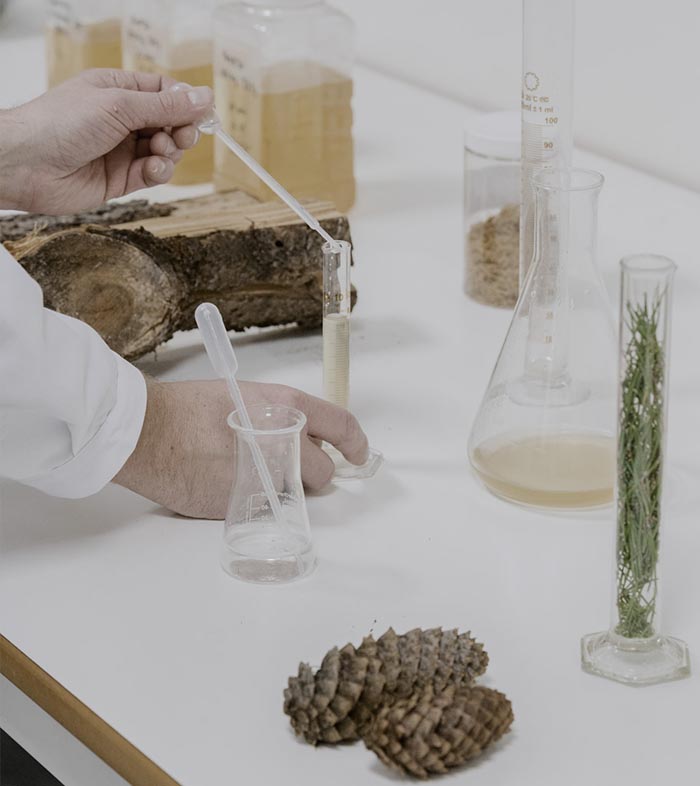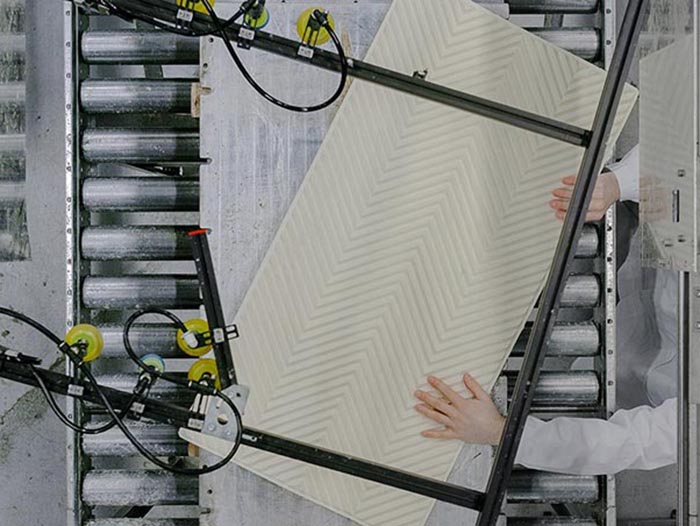Swedish acoustic panels manufacturer Baux, together with industrial design firm Form Us With Love and scientists from the Royal Institute of Technology (KTH), have released a new line of 100 percent bio-based acoustic panels.
Based on over 25 years of research, Baux’s Acoustic Pulp is a series of nine biodegradable acoustical panels made from sustainably harvested Swedish fir and pine trees.
Reminiscent of paper making techniques, the wood from the trees is first broken down into a liquid cellulose form, before the pulp is dried out. All the ingredients are then mixed together with water and fed into a 3D mold, which is pressed with 40 tonnes of weight, and dried under pressure using a high-tech vacuum technique.

The team took cues from nature to nail the necessary properties of their biomimicry-engineered innovation.
“To create fire-retardancy, we mimicked the natural wood fossilisation process and the resilience of grass roots. For water repellency, we looked to the super-hydrophobic surface of the lotus flower,” Baux explains.
“For colour, we added wheat bran. For strength, we utilised a naturally catalytic combination of potato starch, plant-based wax and citrus fruit peels from lemons, limes, and oranges to provoke the cellulosic molecules into creating a powerful matrix of intermolecular fusions.”
At the same time, the team borrowed the hexagonal honeycomb design from bees—a structure popularly used by the aerospace industry—to create the nano-perforations found on each panel for prime sound absorption and durability, while maintaining a lightweight product with minimal material usage.
These perforations, made with an advanced laser technique, allow sound waves to enter before trapping them in the honeycomb chambers on the backside.

“A triad of sound absorption mechanisms are used: diffusion, absorption, and chambers. The irregular 3D shaped surface breaks up reflections and spreads them in different directions,” Baux explains.
“The cellulosic material fibers transform sound waves into micro movement and heat. And the honeycomb chambers trap sound waves entering through the perforated surface which bounce around and ‘die out.’”

The design of the acoustic panels was inspired by paper folding, or origami, techniques. It currently comes in patterns, and three slightly different colors.
The Baux Acoustic Pulp panels are manufactured in a factory that runs on 100 percent hydropower. Any ingredients and water left over from one batch is recycled back into the factory’s closed circular system, to be reused again in the next batch. The only emissions generated is pure, clean water vapor that’s released when the Acoustic Pulp dries.
When a panel reaches the end of its life, it can be recycled in its entirety.

“Over the past century, fossil based materials have become the norm and standard for acoustical products in the interior design and building industries,” Baux announced.
“It’s time for a new kind of material. One that breaks the mould and pushes us beyond what the world believes is possible for sustainability in acoustical products.”
Images: Baux

